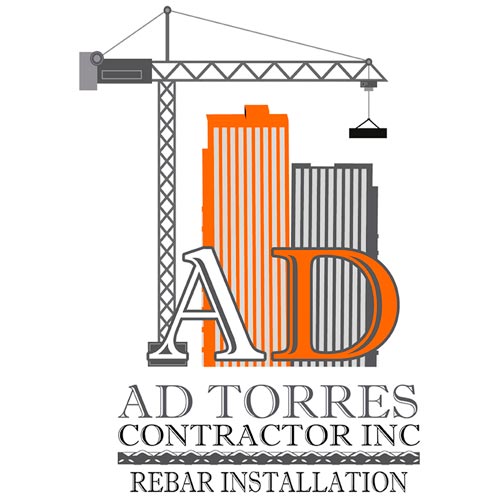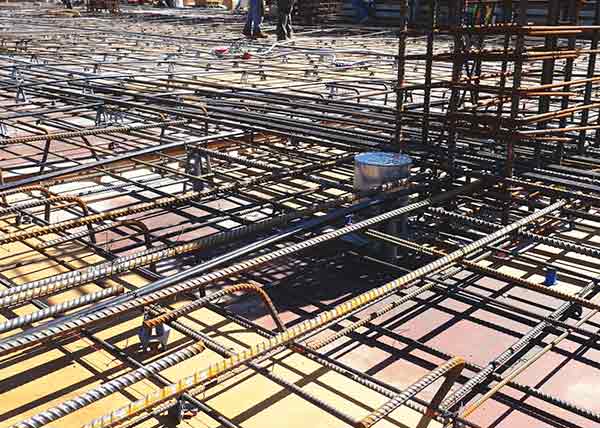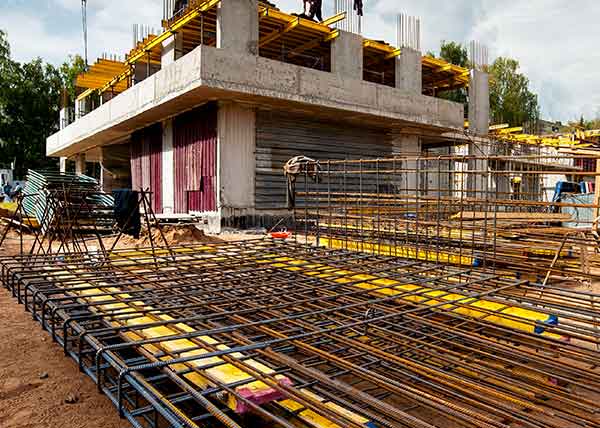Post Tension
Post Tension
What is Post-Tensioning?
Post-tensioning is a technique for reinforcing concrete. Post-tensioning tendons, which are prestressing steel cables inside plastic ducts or sleeves, are positioned in the forms before the concrete is placed. Afterward, once the concrete has gained strength but before the service loads are applied, the cables are pulled tight, or tensioned, and anchored against the outer edges of the concrete.
Post-tensioning is a form of prestressing. Prestressing simply means that the steel is stressed (pulled or tensioned) before the concrete has to support the service loads. Most precast, prestressed concrete is actually pre-tensioned-the steel is pulled before the concrete is poured. Post-tensioned concrete means that the concrete is poured and then the tension is applied-but it is still stressed before the loads are applied so it is still prestressed.
ADVANTAGES & APPLICATIONS OF POST-TENSIONING
– Reduction of shrinkage and cracking in slabs which results in the use of fewer (or even no) joints.
– If cracks do form they are minimal and are held together.
– It enables the possibility of building on a wider variety of soil types which are typically difficult to build slabs on and prevents the associated problems with traditional slab-on-grade.
– The slab concrete can be thinner and the distance between cables wider.
– If a foundation shifts, post tension cables will help prevent the foundation from breaking, which makes repair work much easier.
AD Torres Contractor, Inc
Post Tension Cables & Rebar
Understanding the method utilized in post tensioning, as well as how the cables are set up helps clarify why post tensioning is so effective and is beneficial over common rebar. The cables (steel bands wrapped together) are set up within the concrete in a grid pattern (usually about 48 inches apart) and are called tendons when they are covered by a plastic outer shell and held by an anchorage. The plastic duct, or outer plastic shell, prevents corrosion and allows the cables to be flexible and move as necessary. The anchorage enables the cable to be pulled during tensioning, while also securing the tendon in place within the concrete. Once the tendons are tensioned (pulled or stressed), they are grouted in the slab.
Contact Us
GET IN TOUCH WITH US
If you have any question regarding your construction project, we encourage you to schedule an appointment or phone consultation with one of our professionals. We are pleased to offer all types of construction services for your needs.
OUR ADDRESS
7914 Chalice Rd, Severn, MD 21144


